Makine Pişirme Streamline ve Dokunmatik Ekran ve Endüstriyel Anakart ile Yemek Standartlaştırın.
Endüstri arka planı
Son zamanlarda, JD.com Yatırım Haberleri 200 Bir AI yemek robotunda milyon yuan bir kez daha spot ışığına itme akıllı yemek. Kamu raporlarına göre, Robotik pişirme ekipmanı için küresel pazarın yaklaşık USD'ye ulaşması öngörülmektedir 16.044 milyon 2026.
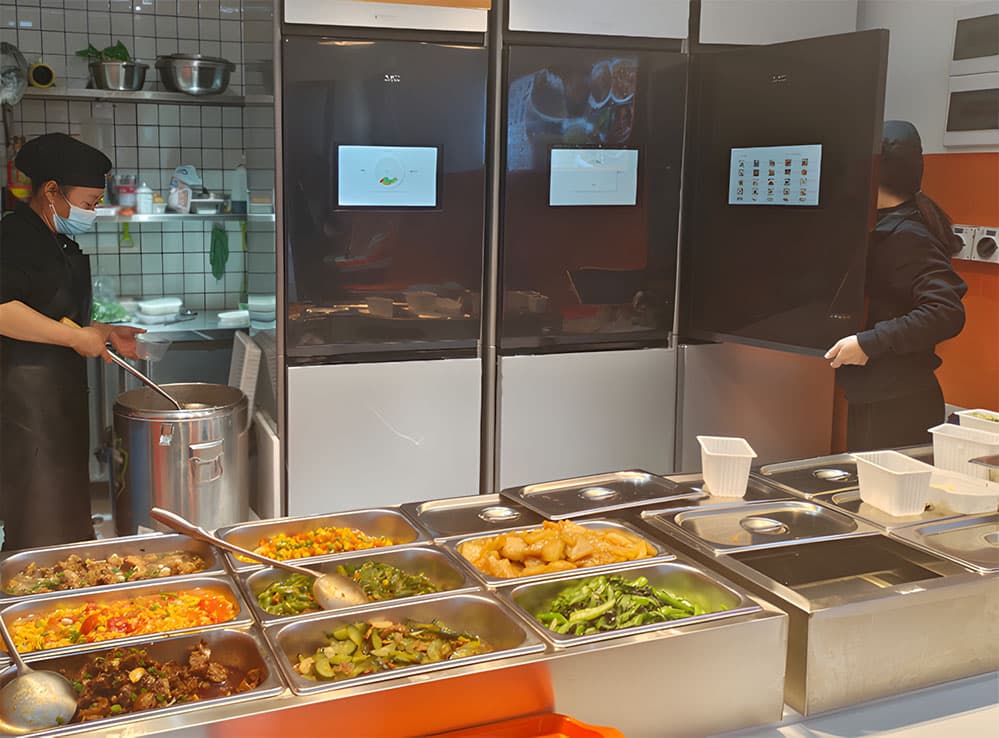
Farkına varmadan önce, fast food zincirlerinde yemek pişirme "şef", kafeteryalar, restoranlar, Ve ev mutfakları bile artık insan olmayabilir. Akıllı pişirme makinelerinin doğumu, “Üç yüksek ve biri düşük” Catering endüstrisinin zorlukları: yüksek kira, Yüksek işçilik maliyetleri, yüksek bileşen maliyetleri, ve düşük brüt kar. Geçmişte, Yemek verimliliğini ve servis seviyelerini iyileştirmek için, Restoranlar şef sayısını artırmak zorunda kaldı, kaçınılmaz olarak ekipman ve alan maliyetleri ekledi. Bugün, AI ve dijital teknolojideki gelişmelerden kaynaklanan, Catering endüstrisinin yeni bir alternatifi var.
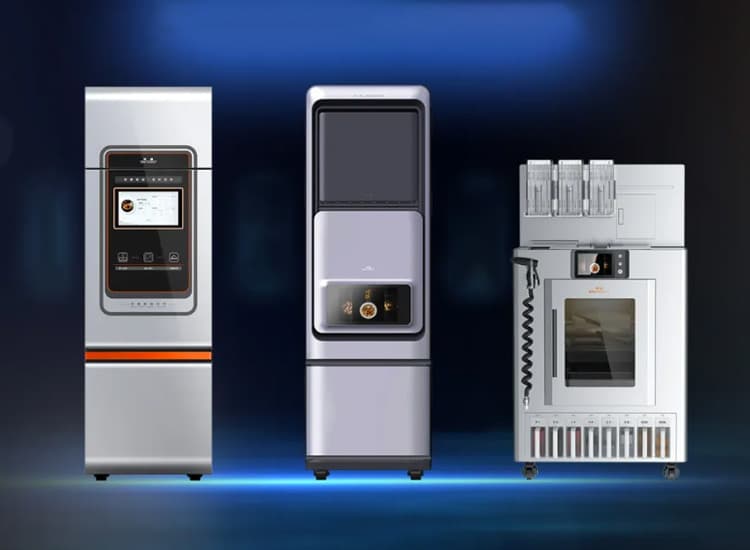
Başvuru Gereksinimleri
Belirli bir müşterinin akıllı pişirme makinesi hem ev hem de ticari ortamlara hitap eder. AI yemek teknolojisinden yararlanarak, Sayısallaştırılmış bir “SOP” tarif kütüphanesi aracılığıyla pişirme işlemlerini standartlaştırır ve otomatikleştirir., Yetenekli bir şefin ısı kontrolü ve tava kaydırma tekniklerini simüle etmek.
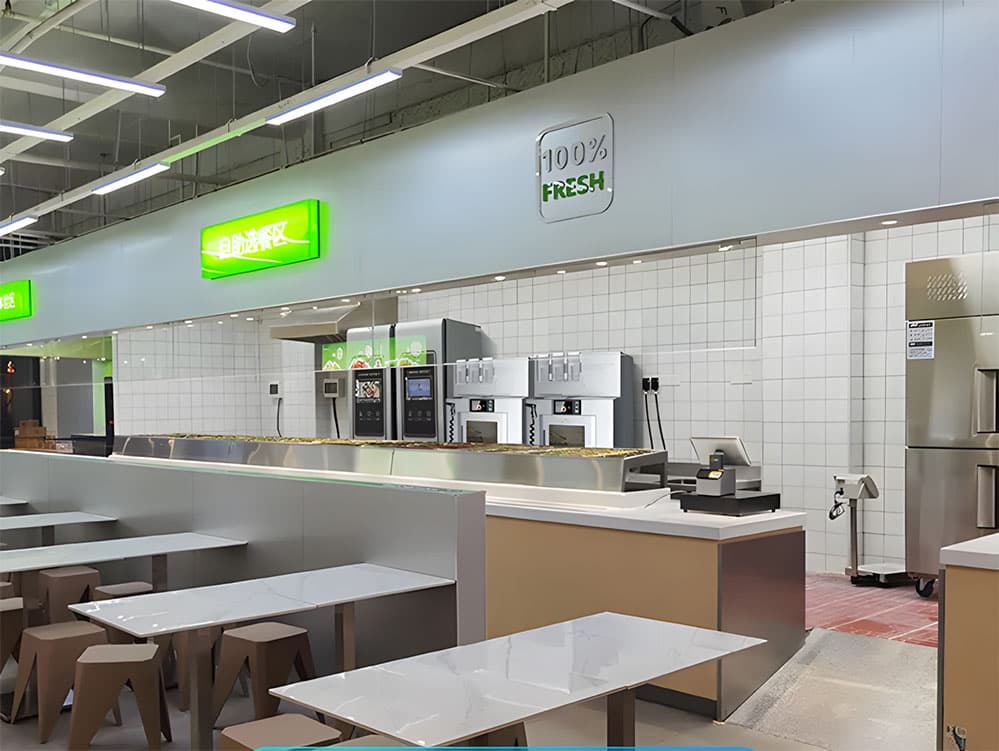
Fakat, Müşterinin ekipmanı gerçek dünya senaryolarında çeşitli zorluklarla karşı karşıya. Otomatik içerik dağıtımı gibi gerçek zamanlı işlemleri yönetmek için önemli bilgi işlem gücü gerektirir, kızartma, ve saflaştırma. Aynı zamanda, Mutfak alanını optimize etmek için, Makinenin kurulumda yapısal kısıtlamaları var. Ek olarak, Mutfağın Isı, gres, ve Steam, ekipmanın stabilitesi ve etkileşim özelliklerine ciddi bir test oluşturur.
TouchThink Ürün Çözümü
Bu zorlukları ele almak için, TouchThink "modüler" bir ürün çözümü sağlar, oluşan TouchThink CX3568 Endüstriyel Kontrol Anakartı ve 8-inç HMI insan-makine arayüzü.
1. Uzay optimizasyonu ve maliyet avantajı için modüler yapı
Müşterinin pişirme makinesi sadece 1-2㎡ mutfak alanını kaplar, Dahili tasarımı son derece kompakt hale getirmek. TouchThink’in Gömülü Modüler Kurulum Çözümü, minimum alan kullanımı ile esnek yapı sunar, Diğer entegre ekipman/modüller için oda izin vermek. Bu modüler yapı, sadece pişirme makinesinin kullanılabilirliğini arttırmakla kalmaz, aynı zamanda müşterinin malzeme maliyetlerini de azaltır, kasa gibi.
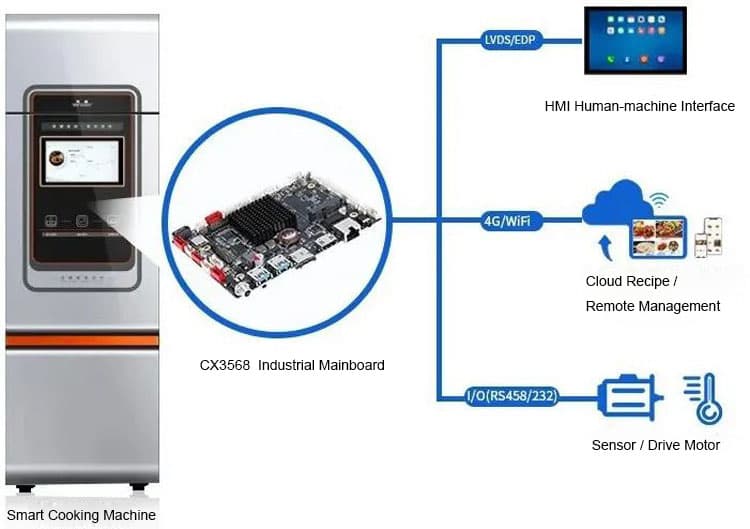
2. Standart ve otomatik gıda servisi için yüksek performanslı bilgi işlem
The TouchThink CX3568 Endüstriyel Anakart, ile donatılmış Rockchip® RK3568 Chip ve dört çekirdekli kol Cortex-A55 işlemci 2.0GHz'de çalışıyor, Düşük güç tüketimi ile yüksek performans sağlar. Karmaşık hesaplamaları hızla işleyebilir ve çoklu kızılötesi sıcaklık sensörlerinden verileri yönetebilir, pişirme makinesinde standart ve otomatik çalışmanın sağlanması.
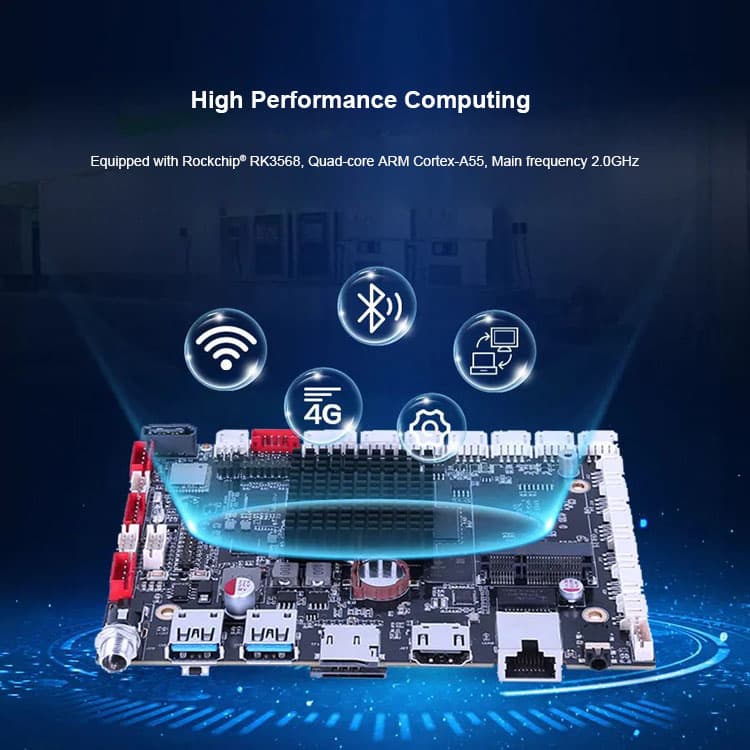
3. Uyumluluk ve genişleme için G/Ç desteği ile kol mimarisi
CX3568 Endüstriyel Anakart, Android'i destekleyen bir kol mimarisi kullanıyor, Linux, ubuntu, Debian, ve diğer işletim sistemleri, Müşterinin özel pişirme yazılımı ve programları ile sabit uyumluluk sağlamak. Android'in açık kaynaklı doğası, Anakartın zengin G/Ç özellikleri ile birlikte, Gelecekteki yükseltmeler ve işlevsellik genişlemesi için güçlü bir temel sağlar.
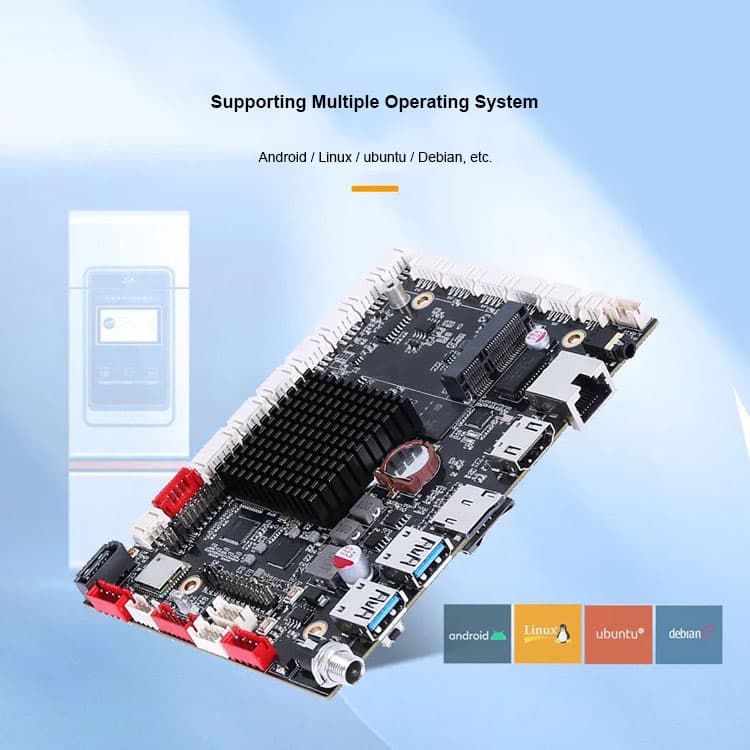
4. Çok yönlü uyarlanabilirlik ve uzun ömür için güvenilir donanım performansı
CX3568 ile donatılmıştır. Gigabit Lan, 4G, ve wifi 6 Ağ modülleri, Dijital Yönetimi Destekleme, Çok işlevli bağlantı, ve pişirme makinesi için uzaktan işlemler. Ek olarak, TouchThink’in Endüstriyel Kontrol Ürünleri Sıcaklık Extremes için Titiz Testi Yapıyor, elektromanyetik uyumluluk, titreşim, ve statik parazit, Çeşitli ortamlarda uzun vadeli istikrar ve güvenilirliğin sağlanması.
TouchThink’in Değer Odaklı Çözümleri
Bağımsız R ile&D ve tasarım özellikleri, TouchThink, gerçek ihtiyaçlara göre uyarlanmış esnek ve son derece uyumlu çözümler sağlayabilir, Müşterilerin ürün değerini artırmasına ve uzun vadeli kullanım maliyetlerini azaltmasına yardımcı olmak.
